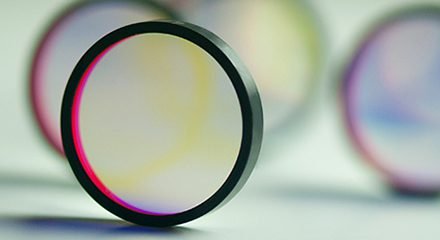
The word monochromator is a combination of two words mono means one chroma means color. Monochromator is used to select or scan a particular wavelength of light. Monochromator is used in different type of spectroscopy in atomic emission, absorption and molecular emission or absorption spectroscopy.
What is monochromator?
A monochromator is also called wavelength selector. Monochromator is an optical device used to select a particular wavelength of light in order to enhance detector response to find out precise accurate results of analysis.
Why we need to select wavelength of light?
In order to enhance detector response we need to select wavelength of light.
In order to make sure that the electromagnetic radiation( either emission or absorption) we are going to record is associated with analyte and has nothing to do with any of interfering specie.
Working of a monochromator:
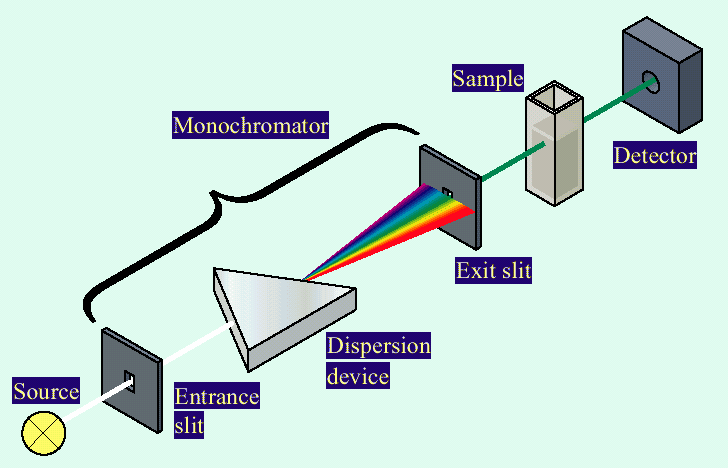
This is diagram of UV visible spectrophotometer. Light is coming from source, light enters to entrance slit then fall on dispersion prism and then from exit slit light falls on sample. So a monochromator is consist of a entrance slit and a exit slit.
Monochromator select light which passes to sample and then to detector .
FOR EXAMPLE:
If 100% light is passes to sample and absorption of light by sample is 1% and 99% light reaches to detector. Detector is normally in the form of photocell and not much sensitive to detect this minor absorption. That’s why selection of light is important. By using monochromator if 10% light passes to sample. Now in this situation detector detect 9% light easily.
Main types of monochromator:
Wavelength selection is carried out through
- Dispersion prism
- Light absorption filters
- Light interference filters
- Light diffraction filters
Light Dispersion Phenomena:
In light dispersion phenomena light dispersion prism monochromator is used. We can select wavelength of light by using prism monochromator. It consist of entrance slit or a exit slit.
White light is coming from source. As we know that when light enter to denser medium from lighter medium it bends towards the medium. Similarly if light enter from denser to lighter medium it bends away from perpendicular. This bending phenomena is responsible for separation of light into different colors.
Another important phenomena is that when light enters denser medium speed of light will differentiate. Speed depends upon wavelength.
For example it is observe that red light has more speed when it passes through denser medium.
Speed ∝ wavelength
When there is more speed there will be more wavelength and has less interaction with prism material and there is less bending of light.
ON the other hand violet light has less speed and short wavelength interaction with prism material is more. Bending of violet light is more. In between red and violet remaining lights are intermediate . In this way white light is separated into different colors.

With the help of movement of exit slit particular light will be selected. And if we move prism and fixed exit slit we can also select the particular wavelength.
Light Absorption Filters OR Light absorption Phenomena:
Light absorption phenomena is done by the help of glass and plastic films or filters with fixed wavelength. In this we cannot scan wavelength. We use the fixed or particular wavelength filters.

Working :
In this if a absorption filter is red in color then it pass out only red color light and stop all other lights. I it is in green color then it will pass only green color light and stop all other lights.
Advantages of absorption filters:
These are very cheap filters as compared to other monochromatic devices.
Disadvantage of absorption filters:
For different wavelength of light there is need to change filters again and again for different colored wavelength. There is another disadvantage of this is that it send wavelength in the form of band.
Light Interference Filters OR Light Interference Filters:
By using light interference filters we select particular wavelength and send it to sample. Light interference filters are of fixed wavelength.
Main Filter Composition:
The main filter composition is base on a glass plate on the upper or inner side. Function of these glass plates is to protect filters from atmosphere.
In center to these glass plate white layer is called dielectric layer. Dielectric layer is made of calcium fluoride or magnesium fluoride. Below or upper to this dielectric layer there are thin metal films. Nature of dielectric layer can select wavelength.

In diagram it is shown that white light is coming from one side and other side give monochromatic light. Given below diagram show the beam path of light.
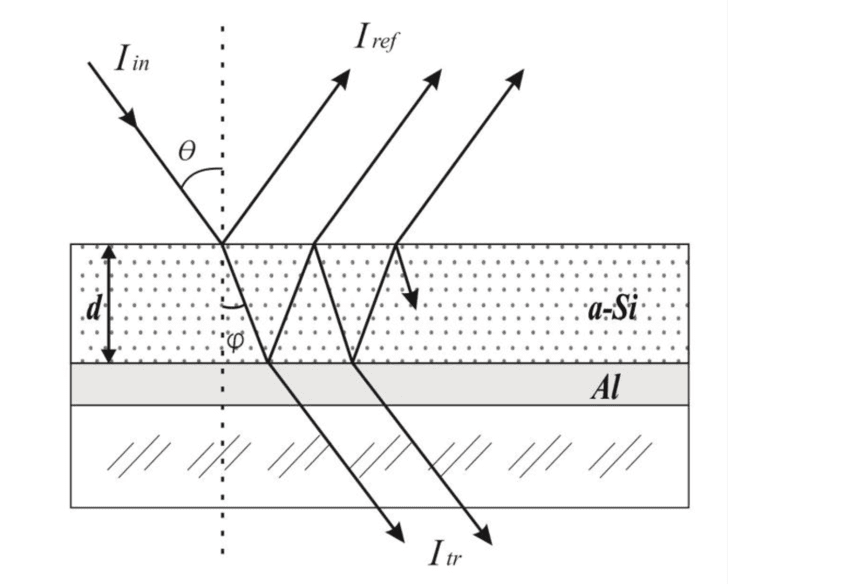
In this diagram it is observe that half light is reflected and half light is transmitted. 50% light is reflected and 50% is transmitted. Light that comes from outside and light that is reflected inside when both superimpose to each other . Output light has a particular amplitude of wavelength. This is due to constructive interference.
For example:
- If different wavelength are coming from source, thickness and refractive index of medium is as to pass out only a particular wavelength of light with greater amplitude.
- The remaining light will stop inside due to destructive interference. Hence if it is observe in diagram no. 1 that light is coming from source after reflectance and transparency at the end there is constructive interference by some waves and destructive interference by some other waves.
- Wavelength having constructive interference are of greater amplitude and these wavelength comes out as a narrow beam of light.
- To find λ maximum :
- λmax =2tη/n
- λ = Emitted wavelength
- t= Thickness of central layer
- n= Interference order
- η= Refractive index
Comparison between interference filters or absorption filters:
Band width of absorption filters is more means it sends more colors. While band width of interference filters is less means it send less colors in one time rather than whole light.

Interference filters are better than absorption filters but these are very expensive because of dielectric medium. And we have to use different dielectric medium for different filters. Also it is needed to change the thickness of material for different wavelength of light.
Light Diffraction:
In light diffraction phenomena the device that is used is diffraction grating having entrance or exit slit. Diffraction grating separate light into different colors , entrance slit is used to focus light. By the help of exit slit we can select which wavelength is pass out or which is to be stopped. In this way by using diffraction grating particular wavelength of light is selected.
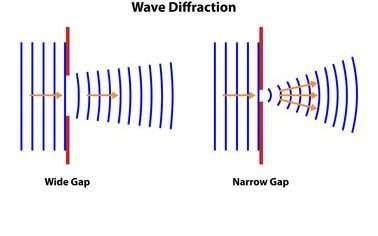
In light diffraction phenomena if gap size of hole is big then wavelength pass out without any change . But if gap size is small then there will be bending of light as shown in figure. This bending of light is called diffraction. After bending it propagate slowly reaches a stage where it broads and appears as straight.
Bending of light is called diffraction.
Young’s Double slit Experiment:
According to young’s double slit experiment ;
when light pass through small holes it bends around corners, this bending of light is called diffraction. After bending there is constructive and destructive interference by waves. And as a result we see dark and bright fringes on screen. When constructive interference crest of one wave meet with crest of other wave and a bright fringe appear on screen. When there is destructive interference crest will meet with trough or trough with crest. And a dark fringe appear on screen.
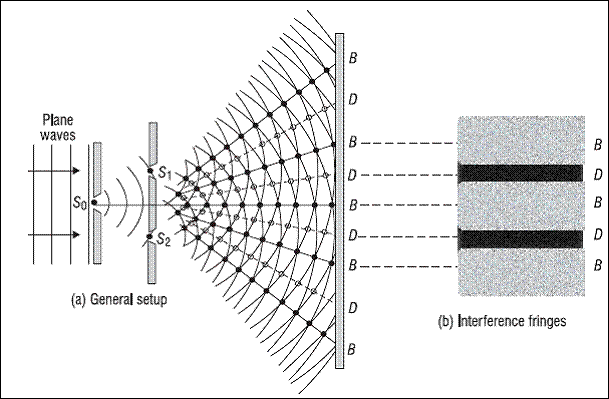
In this way it is proved that light travel in the form of wave produce diffraction patterns. By using this phenomena light can separate into different colors.
What is diffraction grating?
Diffraction grating is a plate on which thin space groves are present. Diffraction grating is of two types some time it is reflecting grating.
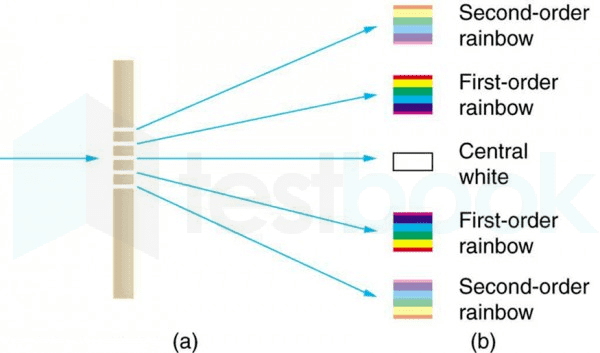
In first order of rainbow it is observed that light is separated into different colors. And dim colors are also shown in second order of rainbow. If zoom the surface of diffraction groves the angle form between groove normal or grating normal is called blaze angle.
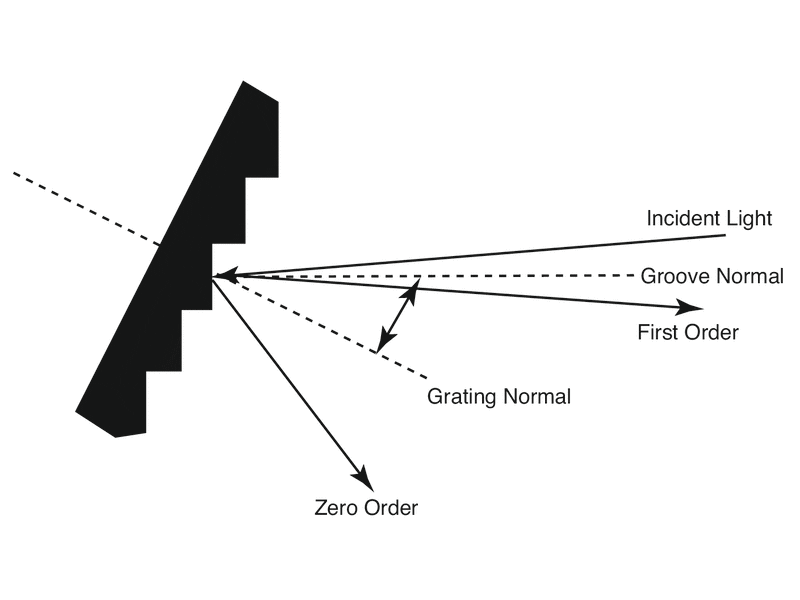
Blaze angle decide light falls on groove it reflects . When light is reflected different wavelength are emitted. By changing blaze angle particular wavelength is emitted and remaining will stop due to destructive interference. 200nm is reflected at less angle than that of 800nm .

Conclusion:
In this content there is brief discussion on monochromator and all the types of monochromator are discussed. How different light phenomenon help to select particular wavelength or separate light into different colors.



Leave a Reply